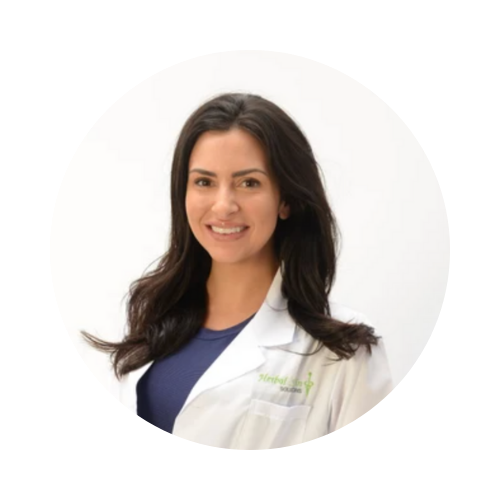“Wild harvested” has quickly become a popular buzzword in the natural skin care realm. What does it actually mean? That answer depends on who you ask. This term is not yet regulated by the FDA, therefore, there are many meanings.
Let’s start by digging back to the origin of the term and pay tribute to the Indigenous Native Americans who hold wild harvesting as a core ritual at the center of their culture.
Native Americans + Wild Harvested Botanicals
Regardless of who you ask, most knowledgeable experts, anyone from botanists to herbalists and formulators alike, will repeat the term back telling you that wild harvesting is essentially plant life grown in the wild and then harvested for its benefits. While that does ring true, the essence of wild harvesting runs deeper than that and it is necessary to acknowledge the Indigenous Native American practices for sustainable wild harvesting in order to ensure that plant life (which we use for everything from nourishing food and skincare to clothing, supplements, and so much more) continues not just surviving but thriving for the highest good of all people, including future generations, and the planet.
One may assume that because an ingredient is grown in the wild, it is free to pick as you please, and that thought process is what can be attributed to much of the endangered plants across the globe.
Sustainability Rituals
Unsustainable and overharvesting, along with careless techniques such as picking plants in the wild from their roots, not only hinders their growth but disables them from going to seed and spreading to create more abundance of their plant life. Taking lessons from the original, indigenous, stewards of the land (regardless of which tribe you look to) teaches us patience and respect for plant life and for the land where we are picking.
In indigenous native culture, it is known like law not to take more than half of any plant growing in the wild. A core value of indigenous cultures that has been passed down over generations is to not ever take more than you need.
Wild Harvesting Signals
Scientists like Robin Kimmerer of the Potawatomi Nation, teach us her ancestors methods If signaling to others who also may be wild harvesting that you have already harvested a location. This is important to help avoid the plant life being depleted due to overharvesting. The method they teach is the bending of Timothy Grass at the entrance of a field when harvesting ingredients such as Sweet Grass. Whether you follow this practice or another as a way to indicate you’ve harvested is vital when wild harvesting.

Contribution by Kaelin Jutras LE, Founder & CEO of Herbal Skin Solutions
Kaelin Jurtas has written many articles for Lipgloss + Aftershave. After becoming a licensed esthetician, she found her approach increasingly rooted in holistic methods and felt the need to provide her clients with a procedure that was safe for any skin type but would still offer “wow factor” results.
Micro-needling was the answer. As she performed micro-needling treatments with a variety of other popular devices, she came up with the idea to create the perfect application tool. Soon after, Herbal Skin Solutions was born, and the CIT Pen was created.
So, along with the founding of Herbal Skin Solutions, she also began its sister platform, The Esthetics Academy, which provides a comprehensive and ongoing training program for CIT Pen providers at no additional cost so you can be truly successful in providing your clients with real results.
It’s so important to have deep presence in the awareness of your surroundings is when you do go wild harvesting. Always look for signs that may show you whether or not another human has recently picked there such as patches of much shorter plants.
Wild Harvesting Tip for Picking
Another way her tribe avoids depleting wild harvested plant life is to never pick from the first plants you see growing. Continue on your path until you find the third plant patch to ensure they are growing abundantly and will continue to do so.
Any good steward of the land will agree on the importance of cutting the plant so that its roots are never disturbed. When plants are ripped up from their roots, not only does that wipe the plant life from the soil indefinitely, but it also disturbs the top layer of living soil, all of the many microorganisms, and nutrients that support the plethora of healthy plant life in that area you are picking from.
Harvesting Offering
The stewardess of our micro-farm, Robin Dibble, of the Great Sioux Nation, honors the plant life she picks, and her ancestors, by always giving an offering of organic Tobacco to the earth where the plants reside accompanied with a “thank you” prayer. This sacred ritual many would call a mindfulness practice, is union with the source energy of all living beings, manifest and unmanifest.
Harvesting Times
Another essential, and equally sacred practice she has shared with us from her people of the Great Sioux Nation, is to harvest early in the morning when life force is at its peak. When the world is still waking up and the plants are full of dewy moisture, the nutrient content in plants are at their highest. The moisture that envelopes the plants from the ground and the air, protects their nutrients, much like the intracellular hydration of Hyaluronic Acid in human bodies that protects our cells and joints, among many other benefits.
As the sun gets higher in the sky, and plants use the light energy to grow, nutrients are used for energy and the process begins all over again. Each day, the sun goes down, the nutrients build again within the plant while the world rests and the nutrients rise from the mineral rich soil, and shoot up through the stem of the plant, leaves, and blossom (if they are flowering plants) for the pollinators who help fuel our food sources.
So, you see, it is a beautiful circle of reciprocity in which plants operate, and when we become one with them, we realize how fortunate we are to live in such a miraculous place called earth where nourishment is provided to us in abundance from the land we live. All we have to do is honor and care for it in return to make sure that the future generations to come will be so lucky.
Offering Acknowledgment
The sacred, Indigenous Native American practices of acknowledgement, whether that be a prayer or simple “thank you”, to the plants that are picked for the benefits they provide, for being healthy and nourishing, and only after asking the plant for permission to pick it and waiting to feel the answer yes, should the plant be picked, is also being studied more and more in the neuroscience fields.
The simple gratitude practice of acknowledging the plant as nourishing and being thankful for their wisdom and the wisdom of the people who passed these special practices on, is now being proven by neuroscientists to make the plants nutrient count rise. This is incredibly beneficial to our human body systems through the food we eat and the plant derived ingredients we put on our skin and hair.
When studying in the Sacred Valley of Peru, Sach’a Munay, under members of the Quechua Tribe, one of the ceremony leaders and medicine men told us how much plants love being offered to God. Using their benefits for nourishment is considered a direct offering to God, as God in their culture of union, is believed to be one with us all.
A ritual for reciprocity they shared with me and asked that it be spread far and wide, is one to be practiced while wild harvesting. Begin by introducing yourself to the plant you are interested in. This can be verbal or nonverbal while holding onto a small piece of the plant as if you are greeting another being. Before picking it, while still holding it in your palm, with your other hand, gently run your fingers back and forth over the plant, in a petting motion, to blend your DNA with theirs from the cup in your hand and blowing onto it as a way for the plants to get to know your essence.
These ancient practices and rituals not only honor the plant but they strike a chord in our being and form a connection. Typically, people do not harm those they care for and feel a connection to. The more connection we can cultivate between people and plants, the better shape our earth, our food and skin, and hair care nutrient sources, will be for many generations to come.


